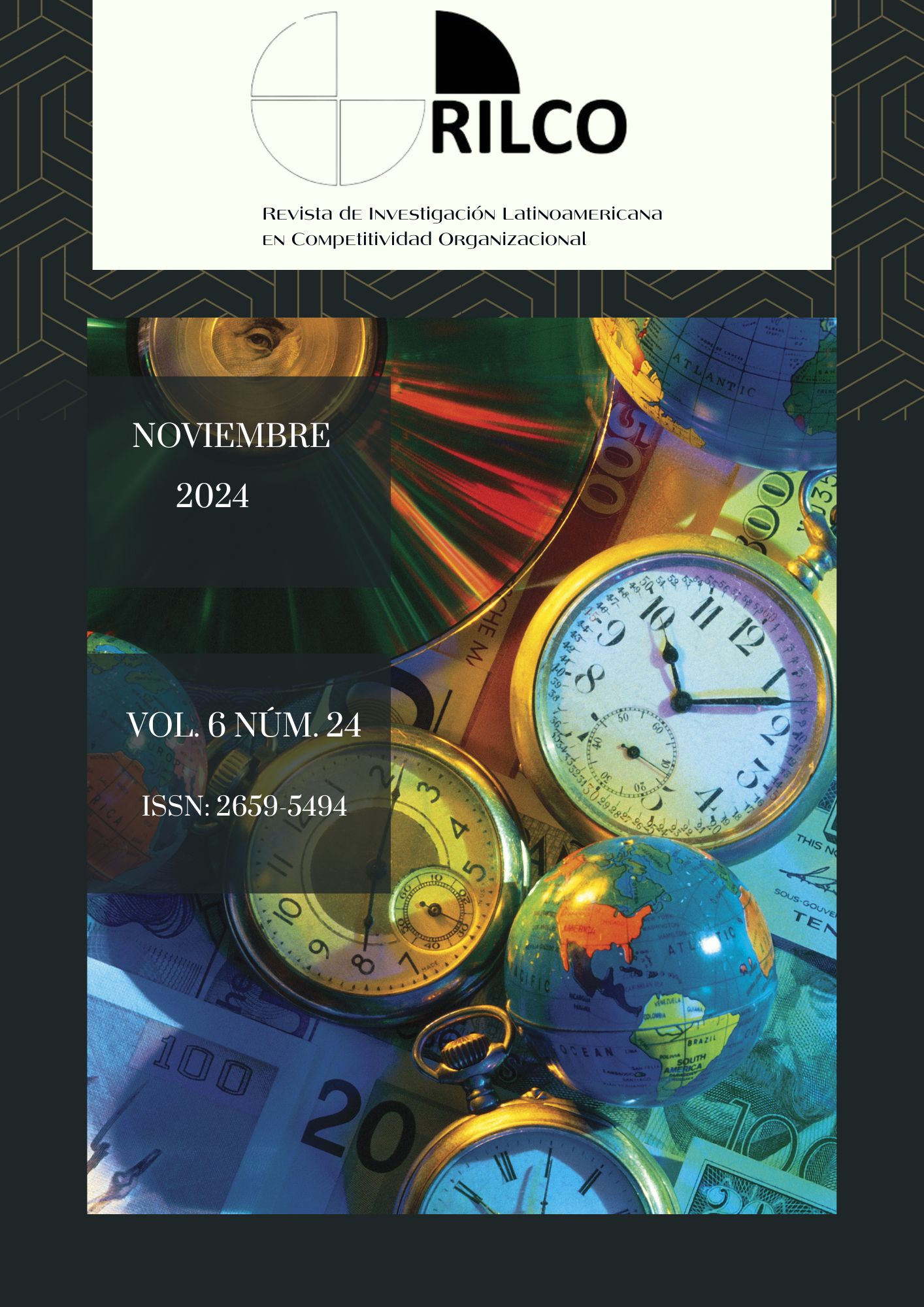Conciliación de inventarios y rastreo de mercancías en el sector de empresas de pintura en México
DOI:
https://doi.org/10.51896/rilco.v6i24.772Palabras clave:
cadena de suministro, valor agregado, inventarios, rastreo de mercancías, logísticaResumen
La cadena de suministro es cada vez más compleja, ocasionando que cada eslabón sea más robusto; los inventarios para la empresa son altamente relevantes para otorgar valor agregado y tener impacto significativo en las utilidades, metas y objetivos. En esa complejidad, la conciliación de inventarios dentro de los almacenes y centros de distribución resulta todo un sistema complejo para empatar el inventario físico y el registrado en el sistema (WMS) a donde las discrepancias incluyen múltiples resultandos en incidencias significativas. El presente artículo muestra una técnica de análisis comparativo de inventarios en una empresa de pinturas, donde la conciliación del inventario se determina a partir de una metodología de rastreo de mercancías entre el sistema ERP y los conteos físicos. La metodología aplicada es por medio del rastreo de mercancías la variable tiempo por día y espacios de producción temporales a 2000 ítems diferentes junto con los conteos cíclicos que se llevan a cabo y el análisis por medio del registro en bases de datos de los sistemas para el rastreo de las mercancías que generan diferencias en el inventario. Los resultados muestran que la metodología de diferencias comparativas es una estrategia táctica en el conteo, conciliación y rastreo de mercancías en el inventario disminuyendo significativamente las incidencias y obteniendo estrategias de control de inventarios, que no solo puede ser utilizado en el sector productivo de pinturas, sino expandirse como metodología de aplicación para múltiples sectores de la logística de diversas empresas.
Citas
Ahmed, E. R., Alabdullah, T. T. Y., Ardhani, L., & Putri, E. (2021). The Inventory Control System’s Weaknesses Based on the Accounting Postgraduate Students’ Perspectives. JABE (Journal of Accounting and Business Education), 5(2), 1.
Al-Sharif, D., & Hamas, Y. (2021). Online Smes Warehouse Management: Challenges and Opportunities. PalArch's Journal of Archaeology of Egypt/Egyptology, 18(15), 17-26.
Bayas, I. Y. G., y Martínez, M. C. (2017). La gestión de inventario como factor estratégico en la administración de empresas. Negotium: revista de ciencias gerenciales, 13(37), 109-129.
Centurion, E. S. O., Urquiza, J. E. M., Aguilar, D. M. A., Villalobos, F. M. I., & Pastor, R. A. P. (2023). METODOLOGÍAS DE IA APLICADAS EN LA CADENA DE SUMINISTRO: UNA REVISIÓN SISTEMÁTICA. Gestión de Operaciones Industriales, 2(01), 46-61.
De Felipe Iglesias, H. (2023). Uso De La Inteligencia Artificial (IA) En La Gestión De La Cadena De Suministro Y Logística.
Espejo, M. (2022). Gestión de inventarios: métodos cuantitativos. Alpha Editorial.
Jadán-Maza, V. K., & López-González, C. P. (2021). Buenas prácticas de control y gestión de inventarios para la Asociación Productores Agropecuarios Llanitos Verdes. CIENCIAMATRIA, 7(2), 248-278.
Manzo, E. V., Mendoza, D. C. C., Rodríguez, R. M. T., & Gutiérrez, B. C. M. (2017). Diagnóstico de los modelos de gestión de inventarios de alimentos en empresas hoteleras. Revista científica ecociencia, 4(3), 28-51.
niveles de competitividad. Universidad del Rosario. Tesis. pp. 1- 87.
Oladele, T. O., Ogundokun, R. O., Adegun, A. A., Adeniyi, E. A., & Ajanaku, A. T. (2021). Development of an inventory management system using association rule. Indonesian Journal of Electrical Engineering and Computer Science, 21(3), 1868-1876.
Ramírez, D. A. R. (2024). Transformación Tecnológica en el Modelo de Gestión de Inventarios en las Mipymes, Revisión Bibliográfica. Ciencia Latina Revista Científica Multidisciplinar, 8(1), 3551-3566.
Salamanca Duarte, S. F., & Cerquera López, D. A. (2021). ¿Cómo la gestión tecnológica de las Pymes impacta en los niveles de competitividad empresarial?
Vega-Caballero, L. G.., Rueda-Vera, G.., & Niño-Rondón, C. V. (2024). Análisis al Sistema de inventarios de una institución Educativa de la Ciudad de Cúcuta. Eco Matemático, 15(2). https://doi.org/10.22463/17948231.4614
Villanueva, C. A. V., Riveyro, J. D. V., & Pariona, J. D. M. (2021). El control de inventarios en el servicio de administración, en la Navegación Aérea Peruana. Revista Hechos Contables, 1(1), 36-48.
Publicado
Cómo citar
Número
Sección
Licencia

Esta obra está bajo una licencia internacional Creative Commons Atribución-NoComercial 4.0.
Esta obra está bajo una licencia internacional Creative Commons Atribución-NoComercial 4.0.
Usted es libre de:
- Compartir — copiar y redistribuir el material en cualquier medio o formato
- Adaptar — remezclar, transformar y construir a partir del material
Bajo los siguientes términos:
-
Atribución — Usted debe dar crédito de manera adecuada, brindar un enlace a la licencia, e indicar si se han realizado cambios. Puede hacerlo en cualquier forma razonable, pero no de forma tal que sugiera que usted o su uso tienen el apoyo de la licenciante.
-
NoComercial — Usted no puede hacer uso del material con propósitos comerciales.


